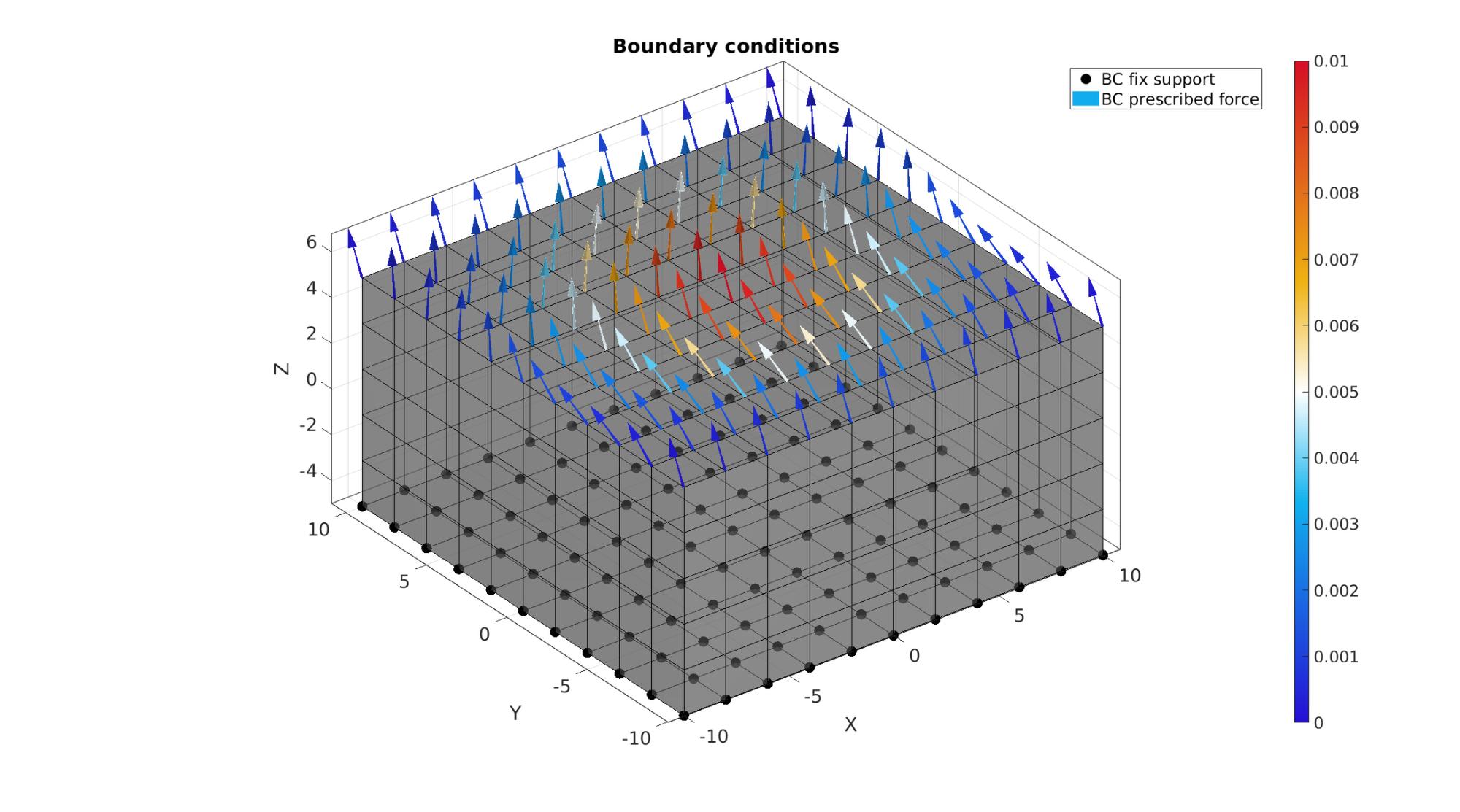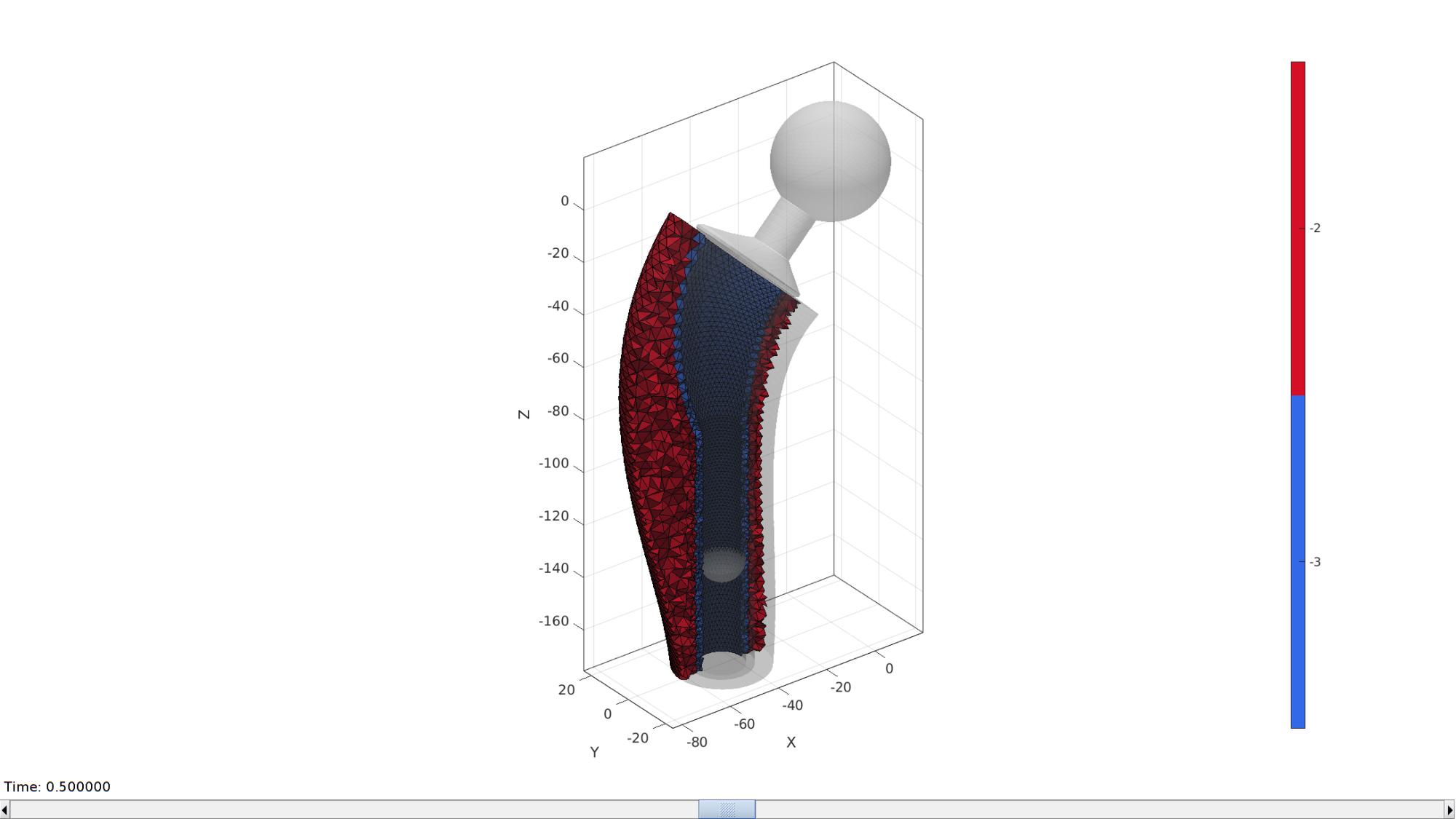

Section 2.7 Triphasic and Multiphasic Materials.Subsection 2.4.4 Transversely Isotropic Hyperelasticity.Subsection 2.4.3 Nearly-Incompressible Hyperelasticity.Subsection 2.4.2 Isotropic Elasticity in Principal Directions.Subsection 2.4.1 Isotropic Hyperelasticity.Subsection 2.3.1 The deformation gradient tensor.Section 2.3 Deformation, Strain and Stress.Subsection 14.12.4 Selecting mesh items.Subsection 13.3.2 Adding data via an equation.Subsection 13.3.1 Adding data from a text file.Subsubsection 11.4.2.4 Deleting GV Widgets.Subsubsection 11.4.2.3 Adding GV Widgets.Subsubsection 11.4.2.2 Setting the GV widget's properties.Subsubsection 11.4.2.1 Selecting and moving widgets.Section 10.2 FEBio Launch Configurations.
 Chapter 10 Running FEBio from FEBioStudio. Section 7.4 Assigning Boundary Conditions. Subsection 7.3.5 Initial Fluid Pressure. Subsection 7.1.12 Prescribed Solute Concentration. Subsection 7.1.11 Prescribed Temperature. Subsection 7.1.10 Prescribed Fluid Pressure. Subsection 7.1.9 Prescribed Shell Displacement. Subsection 7.1.8 Prescribed Shell Rotation. Subsection 7.1.7 Prescribed Displacement. Subsection 7.1.6 Zero Solute Concentration. Subsection 7.1.2 Fixed Shell Displacement. Chapter 7 Boundary Conditions and Loads. Section 6.5 Creating a Solid-Bound Molecule Table. Section 6.2 Setting material parameters. Section 5.4 Creating and Editing a Mesh. Chapter 5 Creating and Editing Geometry. Chapter 4 Creating, Loading, and Saving Models. Subsection 3.14.11 Model Repository Options. Subsubsection 3.10.5.3 Adding or Removing Files. Subsubsection 3.10.5.2 The Add Publication Dialog. Subsubsection 3.10.5.1 Adding or Editing Project Details. Subsection 3.10.5 The Upload/Modify Wizard. Subsection 3.10.4 The Upload Permission Request Dialog. Subsection 3.10.3 Managinig Your Uploads. Subsection 3.10.2 Browsing and Downloading. Subsection 3.10.1 Connecting to the Repository. Subsection 3.8.2 The Model Viewer Panels. Section 3.1 The Graphical User Interface. Subsection 2.4.3 Transforming an object. Subsection 2.4.1 Navigating the Graphics View. Ĝalculated stiffness measurements (.xlsx)Ĭode developed by Ridhi Sahani in publication for the Journal of Applied Physiology.Ĭitation will be updated upon publication, see pre-print. ğiber directions per image window (.xlsx). See below for outline of components of this code: See ‘Test_complete’ for example setup and outputs. Note that the folder structure is set up such that multiple images can be processed at once with input image in \Images, model saved in \Models, and outputs saved in \Outputs. ‘Test_images’ contains example SEM images and ‘Test_complete’ contains the results after running this code. The files here contain all of the required functions and example inputs for this analysis. FEMs are run in FeBio 2.9 and must be in an FeBio compatible format (.xml). A baseline FEM is required, with model geometry matching the size of the SEM images and the boundary conditions and material properties of interest. In this framework, fiber directions are first measured from the SEM images and then used to assign fiber directions in the FEM.
Chapter 10 Running FEBio from FEBioStudio. Section 7.4 Assigning Boundary Conditions. Subsection 7.3.5 Initial Fluid Pressure. Subsection 7.1.12 Prescribed Solute Concentration. Subsection 7.1.11 Prescribed Temperature. Subsection 7.1.10 Prescribed Fluid Pressure. Subsection 7.1.9 Prescribed Shell Displacement. Subsection 7.1.8 Prescribed Shell Rotation. Subsection 7.1.7 Prescribed Displacement. Subsection 7.1.6 Zero Solute Concentration. Subsection 7.1.2 Fixed Shell Displacement. Chapter 7 Boundary Conditions and Loads. Section 6.5 Creating a Solid-Bound Molecule Table. Section 6.2 Setting material parameters. Section 5.4 Creating and Editing a Mesh. Chapter 5 Creating and Editing Geometry. Chapter 4 Creating, Loading, and Saving Models. Subsection 3.14.11 Model Repository Options. Subsubsection 3.10.5.3 Adding or Removing Files. Subsubsection 3.10.5.2 The Add Publication Dialog. Subsubsection 3.10.5.1 Adding or Editing Project Details. Subsection 3.10.5 The Upload/Modify Wizard. Subsection 3.10.4 The Upload Permission Request Dialog. Subsection 3.10.3 Managinig Your Uploads. Subsection 3.10.2 Browsing and Downloading. Subsection 3.10.1 Connecting to the Repository. Subsection 3.8.2 The Model Viewer Panels. Section 3.1 The Graphical User Interface. Subsection 2.4.3 Transforming an object. Subsection 2.4.1 Navigating the Graphics View. Ĝalculated stiffness measurements (.xlsx)Ĭode developed by Ridhi Sahani in publication for the Journal of Applied Physiology.Ĭitation will be updated upon publication, see pre-print. ğiber directions per image window (.xlsx). See below for outline of components of this code: See ‘Test_complete’ for example setup and outputs. Note that the folder structure is set up such that multiple images can be processed at once with input image in \Images, model saved in \Models, and outputs saved in \Outputs. ‘Test_images’ contains example SEM images and ‘Test_complete’ contains the results after running this code. The files here contain all of the required functions and example inputs for this analysis. FEMs are run in FeBio 2.9 and must be in an FeBio compatible format (.xml). A baseline FEM is required, with model geometry matching the size of the SEM images and the boundary conditions and material properties of interest. In this framework, fiber directions are first measured from the SEM images and then used to assign fiber directions in the FEM. #Febio postview element id code
This code was developed to generate scanning electron microscopy (SEM) image-based finite-element models (FEM) to explore the influence of collagen fiber-level organization on tissue-level mechanics. Scanning electron microscopy (SEM) image based finite-element models (FEM)






 0 kommentar(er)
0 kommentar(er)
